#monumento a vittorio emmanuele ii
Text

What you leave behind is not what is engraved in stone monuments, but what is woven into the lives of others.
-- Pericles
(Roma)
#memories#monuments#stone#life#pericles#travel photography#Roma#Italy#quote#monumento a vittorio emmanuele ii
210 notes
·
View notes
Photo


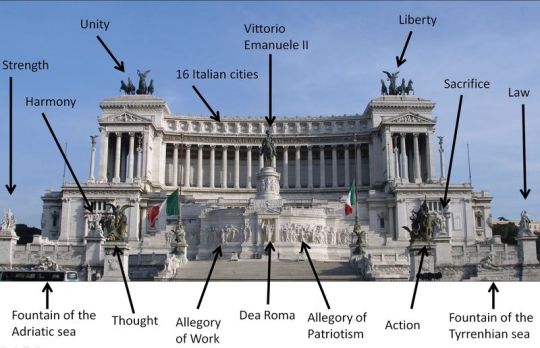

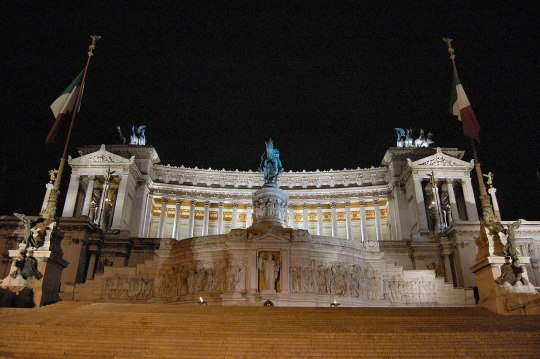


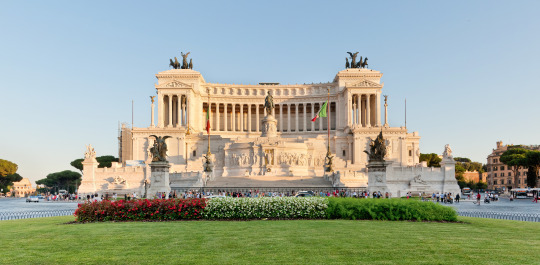
Rome: Victor Emmanuel II Monument
The Victor Emmanuel II National Monument (Italian: Monumento Nazionale a Vittorio Emanuele II) or (mole del) Vittoriano, called Altare della Patria (English: Altar of the Fatherland), is a national monument built in honour of Victor Emmanuel II, the first king of a unified Italy, located in Rome, Italy.[2] It occupies a site between the Piazza Venezia and the Capitoline Hill. It is currently managed by the Polo Museale del Lazio and is owned by the Ministry of Cultural Heritage and Activities.
From an architectural perspective, it was conceived as a modern forum, an agora on three levels connected by stairways and dominated by a portico characterized by a colonnade. The complex process of national unity and liberation from foreign domination carried out by King Victor Emmanuel II of Savoy, to whom the monument is dedicated, has a great symbolic and representative value, being architecturally and artistically centred on the Italian unification—for this reason the Vittoriano is considered one of the national symbols of Italy.
It also preserves the Altar of the Fatherland (Italian: Altare della Patria), first an altar of the goddess Rome, then also a shrine of the Italian Unknown Soldier, thus adopting the function of a lay temple consecrated to Italy. Because of its great representative value, the entire Vittoriano is often called the Altare della Patria, although the latter constitutes only a part of the monument.
Located in the centre of ancient Rome, and connected to the modern one by the streets that radiate from Piazza Venezia, it has been consecrated to a wide symbolic value representing a lay temple metaphorically dedicated to a free and united Italy—celebrating by virtue the burial of the Unknown Soldier (the sacrifice for the homeland and for the connected ideals).
30 sculptures on Italy’s birthday monument
Vittoriano plan
Vittoriano entrance with artistic gate by Manfredo Manfredi;
Sculptural group The Thought by Giulio Monteverde;
Sculptural group The Action by Francesco Jerace;
Adriatic Fountain by Emilio Quadrelli;
Sculptural group The Force by Augusto Rivalta;
Sculptural group The Concord by Lodovico Pogliaghi;
Tyrrhenus Fountain of Pietro Canonica;
Sculptural group The Sacrifice by Leonardo Bistolfi;
Sculptural group The Right by Ettore Ximenes;
A statue on the side of the sculptural group
Winged Lion by Giuseppe Tonnini;
Entrance stairway;
Winged Victory on naval ram by Edoardo Rubino;
Winged Victory su naval ram by Edoardo De Albertis;
Tomb of the Italian Unknown Soldier;
Statue of Goddess Rome by Angelo Zanelli;
Statues of fourteen Italian noble cities by Eugenio Maccagnani;
Equestrian statue of Victor Emmanuel II by Enrico Chiaradia;
Winged Victory on triumphal column by Nicola Cantalamessa Papotti;
Winged Victory on triumphal column by Adolfo Apolloni;
Propylaeus with colonnade on top of which is present
the Quadriga of Unity by Carlo Fontana;
Winged Victory on triumphal column by Mario Rutelli;
Winged Victory on triumphal column by Cesare Zocchi;
Propylaeus with colonnade on top of which is present
the Quadriga of Freedom by Paolo Bartolini;
Portico with colonnade whose upper cornice is decorated
rom the statues representing the regions of Italy. In front of
stylobate, towards the equestrian statue of Victor Emmanuel II ,
there is a terrace of the cities redeemed.
https://en.wikipedia.org/wiki/Victor_Emmanuel_II_Monument
https://www.italybeyondtheobvious.com/monument-to-vittorio-emanuele-ii-in-rome-italys-birthday-monument
16 notes
·
View notes
Photo

This structure is also known as “Monumento Nazionale a Vittorio Emanuele II” ("National Monument to Victor Emmanuel II) to honor Victor Emmanuel, who was the first king of a unified Italy.
Altar of the Fatherland, Rome, Italy
#Altare della Patria#altar of the fatherland#rome#roma#italy#italia#Monumento Nazionale a Vittorio Emanuele II#Il Vittoriano#National Monument to Victor Emmanuel II#architecture#roman#art#art history#wanderlust#explore#adventure#study abroad#travel#travel blogger#travel blog#study abroad blog#photographers on tumblr#travel photography#travel life#photographers of tumblr#picture of the day#photo of the day#tourist destination#tourist#travel destination
94 notes
·
View notes
Photo

🇬🇧The eclectic structure was designed by Giuseppe Sacconi in 1885. It was inaugurated on June 4th, 1911 and completed in 1935. Its design is a neoclassical interpretation of the Roman Forum. It features stairways, Corinthian columns, fountains, an equestrian sculpture of Victor Emmanuel II, and two statues of the goddess Victoria riding on quadrigas. . I was surprised how Italians pulled this one of in these modern times , it is really impressive building. And You would get great panorama from here :) . 🇱🇻Šī iespaidīgā būve tika uzcelta 1935.gadā par godu pirmajam apvienotās Itālijas karalim. . Es tiešām biju pārsteigts, kā itāļiem tas izdevies, šajā modernajā ērā. . . . #travelitaly #instatravelingram #latviesicelo #travelling_europe #italy_ig #instatravell (at Monumento a Vittorio Emanuele II) https://www.instagram.com/p/Bu6cNznAGpl/?utm_source=ig_tumblr_share&igshid=1akipbhallqaj
1 note
·
View note
Photo

📍Altare della Patria, Piazza Venezia, Roma, Italia. 🔹 🔹 🔹 #monumento #nazionale #vittorio #emanuele #II #altar #fatherland #monument #victor #emmanuel #nacional #manuel #plaza #square #venecia #venice #roma #rome #italy #italia #europa #europe #viaje #travel #destino #turismo #tourist #turista #tourism #acolorstory (en Altare della Patria)
#travel#emanuele#venice#monumento#destino#square#viaje#turista#emmanuel#europe#acolorstory#turismo#italia#altar#tourism#victor#manuel#roma#tourist#vittorio#nacional#rome#europa#fatherland#italy#ii#nazionale#monument#plaza#venecia
2 notes
·
View notes
Photo

#Roma #AltareDellaPatria
Victor Emmanuel II'ye saygı göstermek için 1911'de açılan Monumento Nazionale Vittorio Emanuele II (Altare della Patria), Piazza Venezia'da bulunan görkemli bir binadır. Roma'nın nefes kesici manzaralarını sunmaktadır.
https://yatkiralama1.blogspot.com/2019/11/roma-altare-della-patria.html
0 notes
Photo

Make sure you walk to the roof Victor Emmanuel 11 monument at Piazza Venezia for the view out to the Colosseum #rome #colosseum #italy #scenic . . . #wanderlust #travelbug #startthetravel #traveller #globetrotter #traveltheworld #travellife #travelbible #instatravel #instapassport #exploretheworld #travel #travelgram #travelphotography #igtravel #travelandlife #wanderfolk #wheretonext #travelphoto #travelmore #MeetTheWorld #traveller #traveldiary #history (at Monumento a Vittorio Emanuele II) https://www.instagram.com/p/B3Vq7RAAvmG/?igshid=1d5rh9lggnaxs
#rome#colosseum#italy#scenic#wanderlust#travelbug#startthetravel#traveller#globetrotter#traveltheworld#travellife#travelbible#instatravel#instapassport#exploretheworld#travel#travelgram#travelphotography#igtravel#travelandlife#wanderfolk#wheretonext#travelphoto#travelmore#meettheworld#traveldiary#history
0 notes
Text
When in Rome….

They say, ‘when in Rome, do as the Romans do’ I’d like to think I did some of that, I ate, I drank and I tried to take in the incredible beauty that Rome had to offer on both ends of the scale.
On the face of it, in my eyes, Rome is absolutely incredible, full of priceless treasures that I believe everyone should see at some point in there lifetime. Every street has a story to tell, whether it’s the unassuming alley that leads to the Trevi Fountain or huge canyon of a road that leads to Vatican City, every street is photo worthy in some way.
My first morning spent in Rome saw me soaking up the morning sun in the small but magnificent piazza facing the Pantheon. Before I arrived in Rome I swore to myself that I would try and capture ‘the people’ as well as the incredible architecture.

I didn’t have to try too hard, walking down the alleyway that leads up to the Pantheon, stood in-front of me stood a small, immaculately dressed older gentleman that really summed up the ‘Older’ Italian generation. Clean shaved, suit pressed and shoes shined up for 8am on a Friday morning, in my mind, this was the ‘Don of Rome’. As he casually stood talking to a friend he knew, hand in one pocket and a look in his face that looked something out of ‘The Godfather’. I took this moment to photograph this moment before he ‘made me an offer I couldn’t refuse.’

Today was going to be a good day.
Google map in one hand (how the Romans would laugh at me by having a map) espresso in the other, I planned the day ahead and the route I needed to take to capture everything I had on my list. There was nowhere better to start than the Pantheon, so I savoured every last drop of the silky smooth espresso and with a caffeine high stride, I entered the Pantheon.
Now I’m not a religious person, but the Pantheon is the worlds oldest recorded church and you feel it immediately with the scared outer exterior, marble statues and alters within it, it’s seen many a tourist enter through it’s enormous doors and amazing marble floor. All of this pales into insignificance one you cast your eyes upwards to what is still the worlds largest constructed dome, as you stare in absolute awe, the only thing that crossed my mind is, how? What an amazing feat of engineering, what genius!
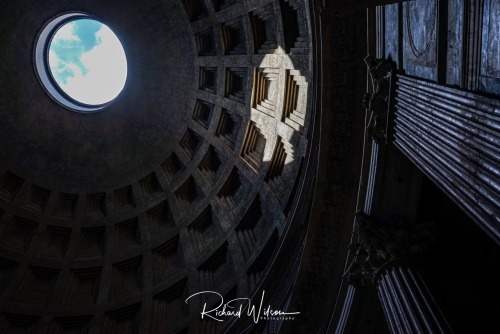
After the Pantheon, it was time to literally walk across Rome to go see the monument to Vittorio Emmanuelle, the first King of Italy and then onto the Colosseum (I’ll save the Gladiator quotes)
There was one stop to make before hand, the Church on the Piazza Navona, as it has one of the real masterpieces of the renaissance period and had to spend a few moments to bask in its breathtaking wonder.

Now you see why….rather than jamming out I know about this church, here is a link to more information on it.
As I sit on the antique dark wood benches, you get the can see why Italy is so heavily catholic, the fresco has such terrifying imagery of violence and torture and yet some of the imagery is wonderfully beautiful that I’m mesmerised, it would be a pleasure to sit in such surroundings every week.
When you look at a map of Rome, the Pantheon, The Trevi Fountain and Piazza Navona look really close on the map. Don’t let the map fool you. One thing is for sure, I’m glad I bought comfy shoes, walking between the three, through the crowds and cobbled streets, it could take 30 mins between each sight.
Following my phone through the streets, left here, right there, I was heading towards the Vittoria Emanuele monument, the map indicates a 50 minute walk. This was much longer for me as along the route are so many unassuming churches with incredible sculptures and frescos that are the real hidden gems of this incredible city. If you see a church door open, please go in, you won’t regret it.

Monumento Nazionale a Vittorio Emanuele II was built in dedication to the first King of a United Italy, Victor Emmanuel II. This building has to be respected, like all this historic buildings should be, with two eternal flames at the top of the steps that are guarded 24 hours a day by Italian Army soldiers, this certainly is a special place. What some may or may not know, this monument has one of the best views of all of Rome. If you venture inside the building and to the top level, you can exit around the back of the building on a balcony, in-front of you is a glass elevator that takes you to the top of the monument. For 7€ it’s really worth the breathtaking view and you can stay up there for as long as you wish.
To the front of the building you can see straight down to Piazza del Popolo and the view to the rear is of the Roman Forum and the Colosseum.

As you can see form the image above, once you leave the Vittorio Emmanuele there is a straight road (typical Roman road) to the Colosseum which was my next stop.
Exiting the monument you turn right, past the organised chaos of the roundabout that lays in-front of the huge white building and suddenly the road opens up and as your eyes follow the cobbles to the horizon past the incredible Roman Forum ruins

Top Tip: when walking down this road, to the left, about half way down there are a small collection of restaurants. As it was 4pm I was peckish so called in to a ‘snack bar’, this bar was a kind of tapas bar with Italian food, over 100 items on the menu and all 2€ each, so three snacks, a beer and 8€ later I left. Also they have USB sockets in the walls. Miracle for my phone.
Now the colosseum was a location I wanted to visit later as I had something in mind, given the weather was clearing and the sun was setting, I wanted to walk past the massively impressive structure and head for a little known secret that Rome has, giving a unique view of St Peters Basilica.
Nobody knows if this spectacle was made for this particular view or if it has just happen out of coincidence. Basically, head towards the Colosseum, turn right and follow the road to the Circus Maximus, cross over to the far side of the road. You’ll walk uphill, on your left will be a large white marble statue, just beyond that or some steel gates, walk through them and follow the road up until you can’t go any further.
If you now see a large green double set of doors, you’ll now see the most unique and perfectly framed view of Vatican’s St Peters Basilica, can’t see it?
Go up to the door, bend down and look through the keyhole…….now you see…..
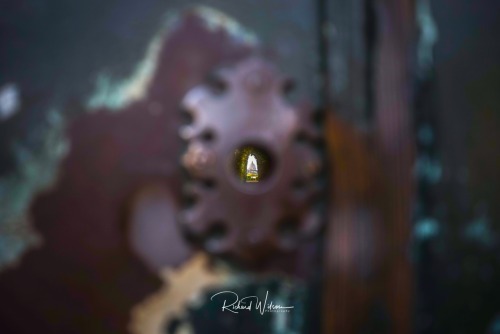
This is the Aventine Keyhole, a keyhole on to a large villa on the outskirts of central Rome. As you can see the keyhole and its garden perfectly line up the Basilica. Perfect for a photographer.
After viewing this secret view, I headed back down the hill towards the Colosseum as he sun was setting and really fancied a cold beer.
As I wanted to get a good view, this meant I needed to see all the vantage points, so I had to quickly walk around the entire building and climb a hill. The reward, a restaurant on the side of the road with refrigerated beers and an amazing view of the setting sun with the crowds of people below. A perfect way to end a day before heading back and taking a few photos in the dark.

Rome is such a rich, diverse, historic and vibrant city, the people are welcoming, the restaurants are friendly and the shop owners are helpful. I’m sad that I didn’t have more time to explore this breathtaking city but knowing that I threw a coin over my shoulder, with my right hand, into the the Trevi Fountain, I will be back again.
Rome my be one of the oldest cities in the world, but the second time I’ve visited this city, Rome still feels new with new things to discover.
Until next time Rome, arrivederci!
Rich
#italy#rome#ancient rome#landscape#photography#travel#history#roman#italy travel#italy vacation#vatican#photographers on tumblr#my photos#adventure#colosseum#pantheon
1 note
·
View note
Photo

Il Monumento nazionale a Vittorio Emanuele II o Vittoriano, è un complesso monumentale nazionale italiano situato a Roma in piazza Venezia, sul versante settentrionale del colle del Campidoglio, opera degli architetti Ettore Ferrari, Pio Piacentini e Giuseppe Sacconi 🇮🇹 The Vittorio Emanuele II Monument, also known as the Vittoriano, Il Vittoriano, or Altare della Patria, is a monument built in honor of Victor Emmanuel II, the first king of a unified Italy, located in Rome, Italy. (en Monumento a Vittorio Emanuele II) https://www.instagram.com/p/BxHLa5Hp9uz/?utm_source=ig_tumblr_share&igshid=i6y7gowt1uou
0 notes
Photo

The Majestic Vittorio Emanuel II Monument aka Altare Della Patria or Altar of the Fatherland! Completed in 1935, it stands proud as a tribute to the Italian Risorgimento, the process of unification undertaken by Victor Emmanuel II and is a national symbol of 🇮🇹 It holds the tomb of the Unknown Soldier with an Eternal flame built under the statue of the goddess Roma in 1921 after World War 1 The view from the top is magnificent ! (at Monumento a Vittorio Emanuele II) https://www.instagram.com/p/Bw_DVRBpiN8/?utm_source=ig_tumblr_share&igshid=107gjzb7faynn
0 notes
Text
When in ROME: City Guide
Overview
Rome is one of the most beautiful Italian cities. It is inevitable to fall in love with the historical buildings, the friendly and loud speaking citizens, the fish based Mediterranean food and of course the chaos. Because of all that, Rome is the most popular destination in Italy. The country receives around 48.6 million tourists a year (2014) and from that, 14 million visits the capital. Between the many amazing places to visit, the Vatican Museum is the far most popular sight in the city with over 4.2 million tourists per year, making them the world's 37th most visited destination. In second we have the Colosseum with around 4 million tourists a year.
Between the ancient ruins such as the Forum and the Colosseum that evoke the power of the former Roman Empire, you will find the cosmopolitan city is full of influential art, architecture and culture.
Rome is by far my favorite city in Italy. It's typically the place some people will immediately love or hate. There is no indecision when it comes to Rome.
That is why I created this guide, to help you navigate in one of the best cities in the world, and hopefully you will enjoy and see the beauty I love so much.
"A fun fact, Rome became the capital city of a unified Italy only in 1870 after taking the title from Florence."
From the Beginning: Ancient Rome
The Ancient City is composed by the Roman Forum, Via Sacra, Arch of Titus, House and Temple of vestals, Palatine Hill and the Palace of Domitian. The Roman Forum, where some of the most fundamental monuments in the history of Rome can be seen, such as the Curia, the center of the Roman Senate, temples including the funeral altar of Julius Caesar, the remains of the magnificent House and Temple of the Vestals, and the Arch of Titus, with decorations recalling the Jewish religion.
From here, you will go up to the Palatine, the hill on which Romulus founded the city of Rome and which later became the site of the Imperial residences. Here it will be possible to see the impressive remains of one of the most important buildings, the Imperial Palace built by the Emperor Domitian, as well as the Imperial Family’s private stadium.
This spectacular visit concludes with a view over the Circus Maximum, the first and largest circus in Ancient Rome used primarily for chariot racing.
I recommend buying your ticket online in advance and arrive early, specially if you are going in the summer (From June until September). During this period, the temperatures in Rome can reach 38 degrees Celsius (100 Fahrenheit) and the sun is ruthless. Expect to walk a lot inside the ancient city, including small hikes to reach the best views. You will find water fountains in some places. The water is perfectly safe to drink, but since there are not too many fountains spread around the site and no places where you can buy water, I also recommend bringing your own bottle.
"Julius Ceaser was the one who introduced the modern 12 month calendar. Before that Lunar or Arabic calendars were used. It was known as the Julian calendar and was introduced in 46 BC."
THE FAVORITE SPOT: Colosseo
The Colosseum is still recognized by the whole world as a symbol of Rome. From ancient Roman times it was called "Amphitheatrum Flavium" by the name of the imperial family Flavia under which began and ended the work for its construction.
The Colosseum's interior was divided into three parts: the arena, cavea and podium. The arena had a wooden floor covered in sand to prevent the combatants from slipping and to soak up the blood. Trapdoors led down to the underground chambers and passageways beneath the arena floor. The cavea, for spectator seating, was divided into three tiers: magistrates and senior officials sat in the lowest tier, wealthy citizens in the middle and the plebs in the highest tier. Women (except for vestal virgins) were relegated to the cheapest sections at the top. The podium, a broad terrace in front of the tiers of seats, was reserved for emperors, senators and VIPs.
Another beautiful site to visit in front of the Colosseo is the Arch of Constantine (Italian: Arco di Costantino). It is a triumphal arch in Rome, situated between the Colosseum and the Palatine Hill. It was constructed by the Roman Senate to commemorate Constantine I's victory over Maxentius at the Battle of Milvian Bridge in 312.
You can arrive to the Colosseum by Metro red line (subway) station Colosseo. Also taxis can approach the perimeter and leave you in front of the entrance. To maximize your experience, I suggest doing a bicycle tour or renting a motorcycle Vespa scooter. There are Scooter options under 50cc you can rent without a driver's license. In addition, you will have no problem parking you scooter in the nearby streets.
I recommend buying your ticket online in advance and arrive early, specially if you are going in the summer (From June until September). Also, be prepared to stay in line and be patient.
THE VATICAN
The Vatican is the smallest country in the World, encircled by a 2-mile border with Italy. It stands on Vatican Hill in northwestern Rome, Italy west of the Tiber River. It is comprised of roughly 100 acres. The first thing you will probably notice is that the city is surrounded by tall stone walls. As an independent state, the Vatican City has its own pharmacy, post office, telephone system and media outlets. Around 1,000 live in the City.
What to visit?
St. Peter's Basilica:
Built on the foundation of the first St. Peter's, the new basilica took 120 years to complete. Masonry, sculpture, painting and mosaic work continued for nearly another 200 years. Now, It is the world's second-largest Christian church after the Yamoussoukro Basilica in Cote d'Ivoire. The dome of the basilica was designed by Michelangelo, and is 400 feet tall and 138 feet in diameter. The church is shaped like a cross and is almost 700 feet long, 450 feet wide at its widest point, and stands on more than 18,000 square yards. In the grottoes or necropolis, beneath the basilica, is a papal burial chamber. The tombs of many popes, including St. Peter (the first pope), are located there.
"Fun Fact: Despite its massive size and importance, St. Peter's is not a cathedral, which normally is a bishop's principal church. That means the pope is the bishop of Rome, and his cathedral church is in Rome and not in the Vatican as many people may think."
Vatican Museum:
"The Vatican, the Museum of Museums," not only houses the extensive collections of art, archaeology and ethno-anthropology gathered by the Popes over the centuries, but also contains some of the Apostolic Palace’s most extraordinary and artistically significant rooms.
The Vatican Museums themselves were originally founded as collections of works of classical archaeology. The Popes viewed themselves as the legitimate heirs of Roman history. The pagan capital had turned Christian; the imperium of Augustus and Trajan was merged into the imperium sine fine of the Catholic and Apostolic Church. The monuments of the Roman civilization therefore had to be preserved, safeguarded and revered ad maiorem Dei gloriam and for the honour and glory of the Church.
For me, this is one of the most beautiful museums in Europe. Make sure to reserve a full day to you visit that is because, like the Louvre, the museum is incredibly big. From the exhibitions, to the Apostolic rooms, the Sistine Chapel and the gardens, you will certainly spend many hours inside.
Tickets now are all by appointment and they start as early as 8 am. As always, arriving early in the morning is the best option. There are less people outside in line and when you get in it is the perfect opportunity to see the museum in peace. I recommend going straight to the Sistine Chapel and seeing it first. It will probably be empty and you will love to see the room like this. Then you can return to the beginning and see the rest of the collection.
"Fun Fact: The new museum was created thanks to the efforts of a wide-reaching campaign of purchases from antique dealers and excavators working in the Papal States. The Congress of Vienna (1815) and the diplomatic efforts of Antonio Canova, Inspector General of the Fine Arts and the Vatican Museums, made it possible to recover almost all of the previously seized artworks. "
ALTAR OF THE FATHERLAND
The Altare della Patria, also known as the Monumento Nazionale a Vittorio Emanuele II or Il Vittoriano, is a monument built in honor of Victor Emmanuel, the first king of a unified Italy, located in Rome, Italy.
This is a must see place in Rome, mainly because of its opulent size and majestic architecture. Another great thing about the Altar, is that you can visit it for free. Just go and climb the huge stairway to have a wonderful sight of Rome and have a closer look at the eternal flame.
WHAT TO VISIT ON THE STREETS?
Restaurant Cacio & Pepe
Where the true Romans and renowned chefs (like Anthony Bourdain) eat. This is my favorite restaurant in Rome. The food is unbelievably simple and good. The main dish is the Cacio & Pepe that gives the name to the restaurant. It is a simple spaghetti with cheese and peeper, but the done perfectly. Make sure to arrive at 12 pm to get a table, otherwise you will have to wait a lot. The menu is written on a board outside. Wine is produced by the house and served in glass jars in 3 different sizes. The best part: prices are very cheap!
Via Giuseppe Avezzana, 11, 00195 Roma, Italy | trattoriacacioepepeprati.com
Villa Borghese
The Central Park for the Romans. This beautiful park located in the hills, is not special because of its size, but because of its beautiful gardens. Don't expect to see anything like the French gardens in Paris or Versailles. This is truly Italian and more than that, truly Roman. The trees and plants is what you would expect if you lived in the ancient Rome. Make sure to reserve a full afternoon to walk around and have a Roman experience. You will find gardens, fountains, villas and many other things to see inside the park. One suggestion is to rent a bicycle and ride around. This would be specially great if you decide to ride from the Villa Borghese to our next stop: Piazza del Popolo.
sovraintendenzaroma.it
Piazza del Popolo and Fontana di Trevi
Do you remember the movie "La Dolce Vita"? Well, so you will remember this piazza and the fountain. Here, Marcello and Maddalena met the prostitute. The scene is beautiful, with the fountain, the black and white, the lights, and for those who love Italy and La Dolce Vita, you will love to see where the movie was shot.
Come il Latte
The BEST gelato you will have in Italy (that is right, in Italy). I am an apassionado (lover) of Gelato, and because of that I can tell that I tried ice creams more than any other human being. When it comes to gelato, this is the best you can get. The small store away from the city center produces its own gelato inside the store (as many others) . That is not what makes this gelato the best, but 3 other reasons: 1. Texture is like nothing you tasted: it has the perfect texture, not too soft and not too hard, doesn't taste like a yogurt but at the same time it also doesn't taste like an ice cream. It simply taste like a gelato should be, right in the middle; 2. The flavors and ingredients are amazing: I always test the quality of a gelato by the flavor Baccio di Latte, which is basically a milk gelato. I like to use that flavor because its simple and there are no distraction in comparing them. I can say, that once you mastered the Baccio di Latte, all other flavors must be good; 3. Baked brownie inside the cup: that is right, they put the dough inside the cup of the gelato and then they bake it for 5 to 8 minutes and last they serve the gelato of you preference. Hot fresh baked brownies and the best gelato, what can go wrong?
Via Silvio Spaventa, 24/26, 00187 Roma, Italy | comeillatte.it
#Rome#Italy#Italia#Roman#Roman Forum#Forum Romano#When in Rome#Colosseo#Colosseum#Pantheon#Ancient City#Arch of Constantine#Vatican#Pope#Altare Della Patria#Spanish Steps#City Guide#Tourism#Tour
1 note
·
View note
Text
Italian tourists skinny-dipping in ancient Roman fountain spark outrage: 'Italy is not their home …
The historic site, also called Monumento Nazionale a Vittorio Emanuele, is a tribute to Victor Emmanuel II, the first king of Italy after the country's … social experiment by Livio Acerbo #greengroundit #travel #tours
from Blogger https://ift.tt/2LsdujI
via IFTTT
0 notes
Photo





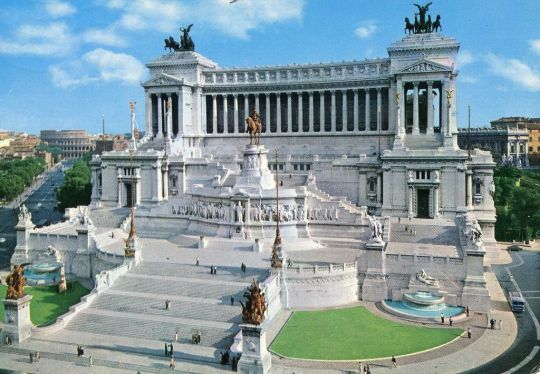
VICTOR EMMANUEL MONUMENT. Rome, Italy
Monumento Nazionale a Vittorio Emanuele II
Victor Emmanuel II, the first king of a united Italy
Officially known as the Monumento Nazionale a Vittorio Emanuele II, the enormous white marble white marble monument that dominates Romes's Piazza Venezia was built as a tribute to the first king of a united Italy, Victor Emmanuel II. Construction on the monument was begun In 1885 after Giuseppe Sacconi won the architectural contest. The northern slope of Capitoline Hill was cleared for the monument, destroying Roman ruins and medieval churches in the process. The new monument was dedicated in 1911, at the fiftieth anniversary of the kingdom.
It's a pomous monument built with sparkling white marble from Botticino and deecorated with numerous allegorical statues, reliefs and murals, created by artists from all over Italy. The monument, about 260 x 390 feet, consists of a large flight of stairs leading to a massive colonnade. To the right and left of the entrance are two fountains, representations of the two seas that border Italy. At the center of the monument is the colossal equestrian statue of Victor Emmanuel, the work of sculptor Enrico Chiaradia. At the foot of the statue is the Tomb of the Unknown Soldier, inaugurated in 1921. Guards of honor stand guard day and night. The upper section of the monument consists of a massive curved colonnade with fifteen columns, framed on either side by classical temple-like wings. Two bronze statues crown the monument, each with a statue of a winged Victory and four horses. The statue on the right represents freedom, while the one on the left represents unity. They were added in 1927, sixteen years after the monument was inaugurated.
Although tourists love the Victor Emmanuel Monument, it's not exactly known as one of Rome's most beautiful structures. It's considered too monumental and the bright white color doesn't fit well into the ochre color of its surroundings. The monument has been nicknamed "The typewriter" and "The Wedding Cake". But, the monument is well worth a visit, even if only for the great views from the top. A glass elevator to the top was added to the passageway at the back of the monument in 2007.
Also connecting at the back of the monument is the Santa Maria in Aracoeli, a church with a history going back to the sixth century. To the right of the monument, a large staircase with 122 steps lead to the church. And to the right of these stairs are the grand stairs leading to Capitoline Hill (Not shown on the miniature).
http://www.genegillminiatures.com/photos2/victor-emmanuel.html
http://www.genegillminiatures.com/
http://www.genegillminiatures.com/gallery.html
2 notes
·
View notes
Photo

The Trevi Fountain is a fountain in the Trevi district in Rome, Italy, designed by Italian architect Nicola Salvi and completed by Giuseppe Pannini.
#The Altare della Patria#Monumento Nazionale a Vittorio Emanuele II#Victor Emmanuel#Il Vittoriano#rome#italy#rome italy#traveling#adventure#contiki
0 notes
Photo

📍Altare della Patria, Piazza Venezia, Roma, Italia. 🔹 🔹 🔹 #monumento #nazionale #vittorio #emanuele #II #altar #fatherland #monument #victor #emmanuel #nacional #manuel #plaza #square #venecia #venice #roma #rome #italy #europe #viaje #travel #destino #turismo #tourist #turista #tourism #acolorstory #photography #fotografia (en Monumento a Víctor Manuel II) https://www.instagram.com/p/BpYZs9indtq/?utm_source=ig_tumblr_share&igshid=eilkhnque3ah
#monumento#nazionale#vittorio#emanuele#ii#altar#fatherland#monument#victor#emmanuel#nacional#manuel#plaza#square#venecia#venice#roma#rome#italy#europe#viaje#travel#destino#turismo#tourist#turista#tourism#acolorstory#photography#fotografia
0 notes
